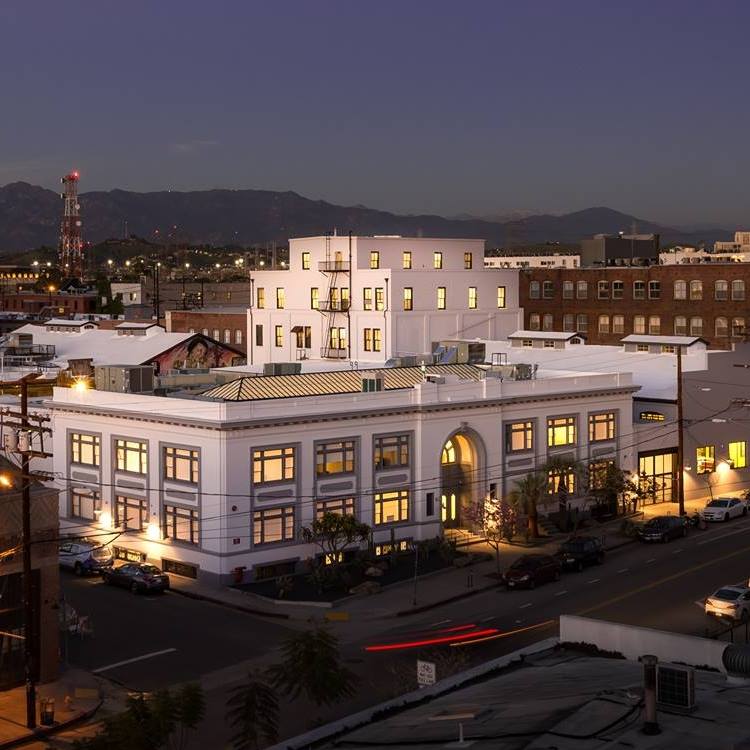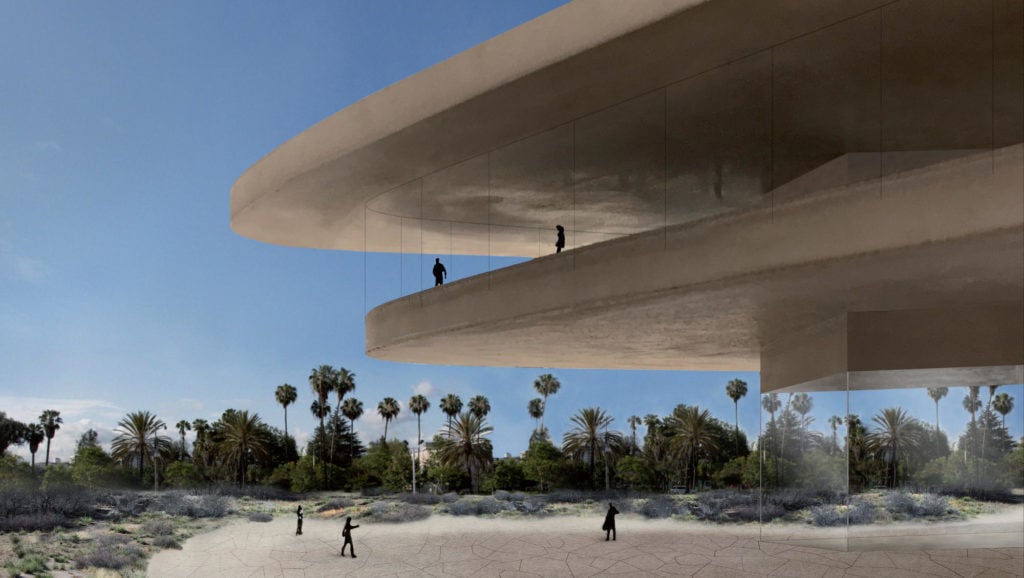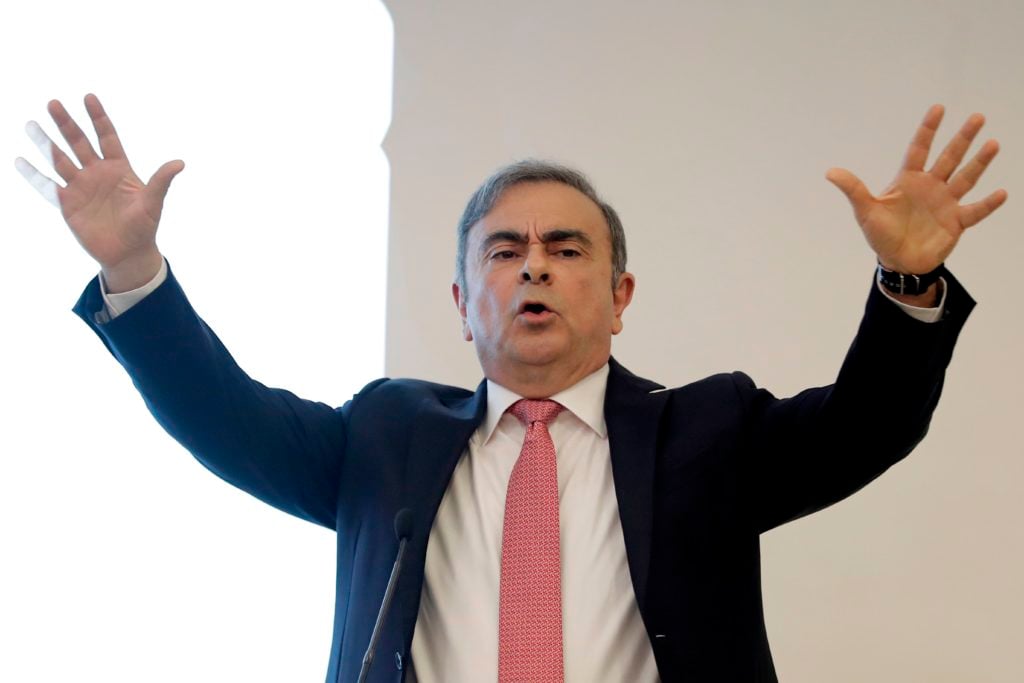Every Monday morning, Artnet News brings you The Gray Market. The column decodes important stories from the previous week—and offers unparalleled insight into the inner workings of the art industry in the process.
This week, mapping the potholes on the road to growth…
CASE STUDY
On Wednesday, Neal Boudette of the New York Times worked through the curious tale of Carlos Ghosn, whose historic run as the only person ever to run two Fortune Global 500 companies at the same time turned from sordid to surreal over New Year’s, when he fled multiple charges of financial wrongdoing by successfully smuggling himself out of Japan by hiding inside a customized case for a large musical instrument. And buried inside the details of his rise, fall, and bizarre getaway is a cautionary tale for the gallery and museum worlds alike.
For the uninitiated, Ghosn (rhymes with “loan,” FYI) became a colossus of business by climbing through the ranks of French tire manufacturer Michelin, then joining famed Gallic automaker Renault as executive vice president in 1996. There, he played a central role in returning the then-struggling company to strong health. His merciless streamlining at Renault even led some in France to dub him “Le Cost Killer”—notably, a moniker French labor unions would later recycle for a young, leanness-obsessed telecom entrepreneur named Patrick Drahi, years before he would go on to acquire Sotheby’s.
But this isn’t the art-industry connection that matters. After Renault acquired 43.4 percent of Nissan when the Japanese car giant was teetering on the edge of the abyss in 1999, the company installed Ghosn as CEO. His resurrection magic traveled well. By 2005, Renault’s board was so impressed by Ghosn’s cutback-spurred success at Nissan that they tasked him with leading both companies simultaneously.
In 2011, midway through what would ultimately become 12 years spent manning both automakers’ steering wheels at once like some executive stunt driver, Ghosn went even bigger. As part of what Boudette labels an “ambitious” plan to boost Nissan’s market share of global auto sales by 2.2 percent by 2019, Ghosn pledged that Nissan and its high-end Infiniti sub-brand would level up from 8.2 percent of the US market to 10 percent in just six years. And this is where the parallel to the 21st century art market emerges.
To accomplish his goal, Ghosn rearranged the incentives for stateside Nissan dealers and buyers. Instead of offering rebates to lure customers behind the wheel of its new cars, the company began dangling extra-juicy bonuses to dealers who hit its increasingly lofty monthly sales quotas. In theory, the handsome payouts would be offset by the sales bonanzas they were designed to reward. But if dealers missed those targets, the corporate office withheld anything resembling sustainable compensation.
The strategy worked… until it didn’t. Here’s Boudette:
With the deadline for Mr. Ghosn’s goal of 10 percent market share a few years away, Nissan’s United States executives increasingly took aim at smaller dealers, imposing ever more demanding terms to ramp up sales. Inside Nissan, the effort was known as “Grow or Go.”
If that all-or-nothing phrase sounds familiar to your art-world ears, it should.

Hauser & Wirth’s sprawling, museum-grade complex in Los Angeles. Courtesy of Hauser & Wirth.
PARALLEL DIMENSIONS
From where we stand today, “Grow or Go” has been part of the art business’s vocabulary for roughly the past six years. To my knowledge, it first appeared in 2014, when collector and analyst Alain Servais used it to describe the dilemma facing modestly sized dealers in an increasingly globalized, polarized, and industrialized primary market. Once it was clear that an outsize share of the world’s riches were leeching straight into the economic topsoil and nearly all of those uber-rich art buyers mainly wanted to compete for the same pricy artists, the belief that it was still possible to run a sustainable little regional gallery started to feel as dubious as believing you’d find top-of-the-charts vocal talent inside every dive bar advertising “the best karaoke in town.”
Some American Nissan dealers eventually began selling cars at staggering discounts, or even buying their own inventory themselves, to hit their ever-rising monthly targets when the deadlines neared. Similarly, an ambitious art dealer might take equally inadvisable measures when unsustainable growth takes priority over everything else. Maybe they start hoping their brand equity can glam up knowingly subpar work, or making it known that buyers can acquire pieces by in-demand artists only by acquiring work from an otherwise-unloved artist on the roster first, or even playing a shell game with investors’ money in hopes they can ladder their way out of big debts incurred for expansion’s sake. Nothing warps a person’s moral parameters quite like desperation.
Boudette writes that, by 2017, Nissan’s US bonus system was burning out dealers and “starting to eat into profits.” Which makes sense, since what mattered to leadership was expansion, not sustainability or good governance. By revving the “Grow or Go” engine until it exploded, then, Ghosn triggered an avalanche of self-defeating behavior that should be instructive to companies of all types, including art nonprofits, where expansionist pressures have helped spur the green-lighting of ill-conceived architectural projects or international franchises in locations with dubious human-rights records. At some point, the only way to keep getting bigger is to start abandoning any wise or ethical mission.

Peter Zumthor’s new LACMA design. Courtesy of Atelier Peter Zumthor.
To be clear, Ghosn’s corporate strategy was hazardous, but it wasn’t criminal. Japanese authorities arrested him on suspicion of multiple white-collar crimes while at the helm of Nissan, including under-reporting his compensation to the taxman by $85 million. He claims the charges were fabricated as nationalist retribution for proving a foreigner could run one of Japan’s greatest companies better than a native executive, and that absconding to Lebanon (where he is a citizen and can live without fear of extradition) was the only way to prove his innocence.
So is Ghosn’s saga absurd? Absolutely! To drive it home, Yamaha, the manufacturer whose modified double-bass case Ghosn and his accomplices converted into a man-sized, breathable stash box for his getaway, tweeted a warning this week that, y’know, its products were not made to safely enclose people. The membrane between true crime and performance-art homage has rarely felt thinner.
But the weirdness of the latest chapter of Ghosn’s story doesn’t negate the business relevance of what came before. So if the art economy is making you feel like your only choice is to grow or go, proceed with caution… and maybe, if the worst-case scenario eventually hits, use something other than an instrument case to flee the debt collectors. My guess is airports are scanning those things a lot more rigorously today than they were a few weeks ago.
[The New York Times]
That’s all for this week. ‘Til next time, remember: no reachable destination will ever satisfy someone who wants the horizon itself.
Follow Artnet News on Facebook:
Want to stay ahead of the art world? Subscribe to our newsletter to get the breaking news, eye-opening interviews, and incisive critical takes that drive the conversation forward.







